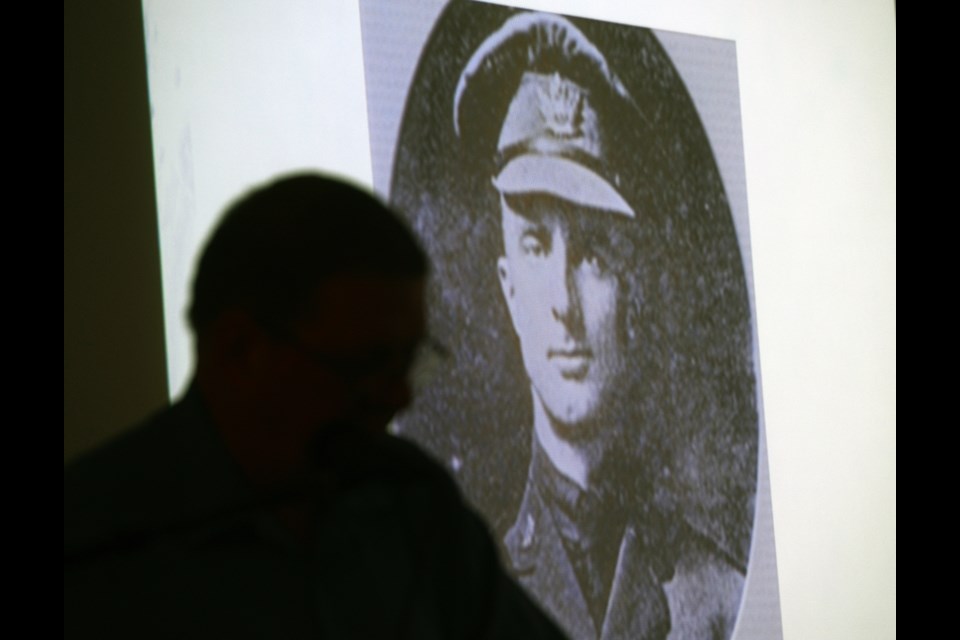Local war historian and writer Ed Butts helped people remember more than the most famous of Guelph's Great War dead on Saturday.
Butts was one of the panelists at Vimy Ridge Symposium marking the 100th anniversary of the historic battle of Vimy Ridge during the First World War.
His talk focused on the stories he has gathered on individuals on
"There are 220 names on that list. Aside from John McCrae that's 219
"These were real people who, for the most part, had lived in
Butts explained the dreaded fear people in
"One person told me that their grandmother told them that those telegrams became objects of dread ... it got to the point where neighbours wouldn't knock on the door when they visited because they didn't want to cause unnecessary alarm. Instead they would just call out from the doorstep."
Not all of
Rev. William Hindson worked here as a recruiter, organizing recruiting drives throughout
Alice Trusdale, the only woman on the
John McTague was taken prisoner during the war and became sick. After being repatriated he died of heart failure at the age of 21.
Herb Philp was journalist whose detailed letters from the front somehow made it through army censors and were published back home in the Guelph Mercury. Philp died of illness after returning home.
Walter Hayward died in an artillery barrage at the age of 22. Butts showed a photo of shrapnel-damaged leather pouch containing pictures that were sent home with
John Hales was a pilot, shot down by enemy anti-aircraft fire in 1918.
Bernard Pantall was sent home from the war after being wounded, but recovered and re-enlisted under a different name so that he could get back on the front line. He died on Vimy Ridge.
Butts has just submitted a book to his publisher on Guelph during World War 1 called Wartime that he hopes will be on bookshelves by Remembrance Day this year.
Butts was one of five speakers at Saturday's day-long event.
Dr. Mike Bechthold talked on the myth and reality of Vimy Ridge; David Webb on the realities and challenges of saving the wounded at Vimy Ridge; Robin Aggus on the role of bagpipes in the Great War and Vimy Ridge; and Linda Granfield talked about The Vimy Oaks, the tale of a handful of acorns picked up amidst the devastation of war and mailed home to be planted.
Saturday's event attracted roughly 60 individuals.
